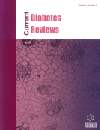
Full text loading...
We use cookies to track usage and preferences.I Understand
Flavonoids have been reported to be vital in treating various chronic disorders. Luteolin (3′,4′,5,7-tetrahydroxyflavone) is a flavonoid present in a variety of plant sources such as celery, green pepper, olive oil, peppermint, thyme, rosemary, oregano, etc. It has been reported to have various pharmacological activities such as antioxidant, anti-inflammatory, anticancer, antidiabetic, anti-Alzheimer, antimicrobial, etc. Many scientific studies have been carried out on luteolin for its possible effects on diabetes and its associated complications. The present review focuses on the role of luteolin in diabetes mellitus and the associated complications. The antidiabetic impact of luteolin is linked with the increased expression of PPARγ and GLUT. Various in vitro and in vivo studies have been performed to explore the effects of luteolin on diabetic complications, and it has shown a significant impact in the management of the same.

Article metrics loading...

Full text loading...
References


Data & Media loading...

